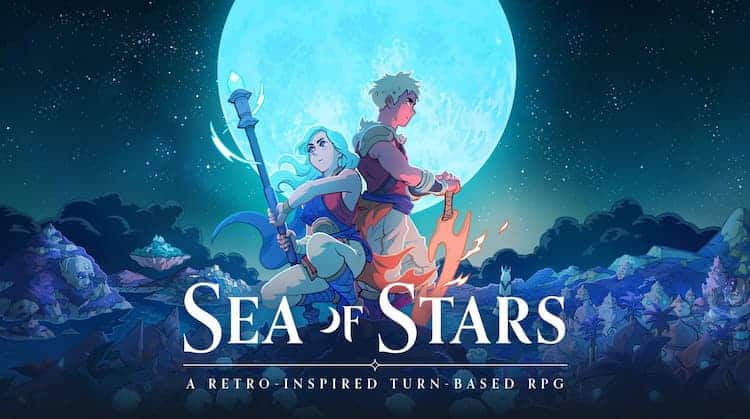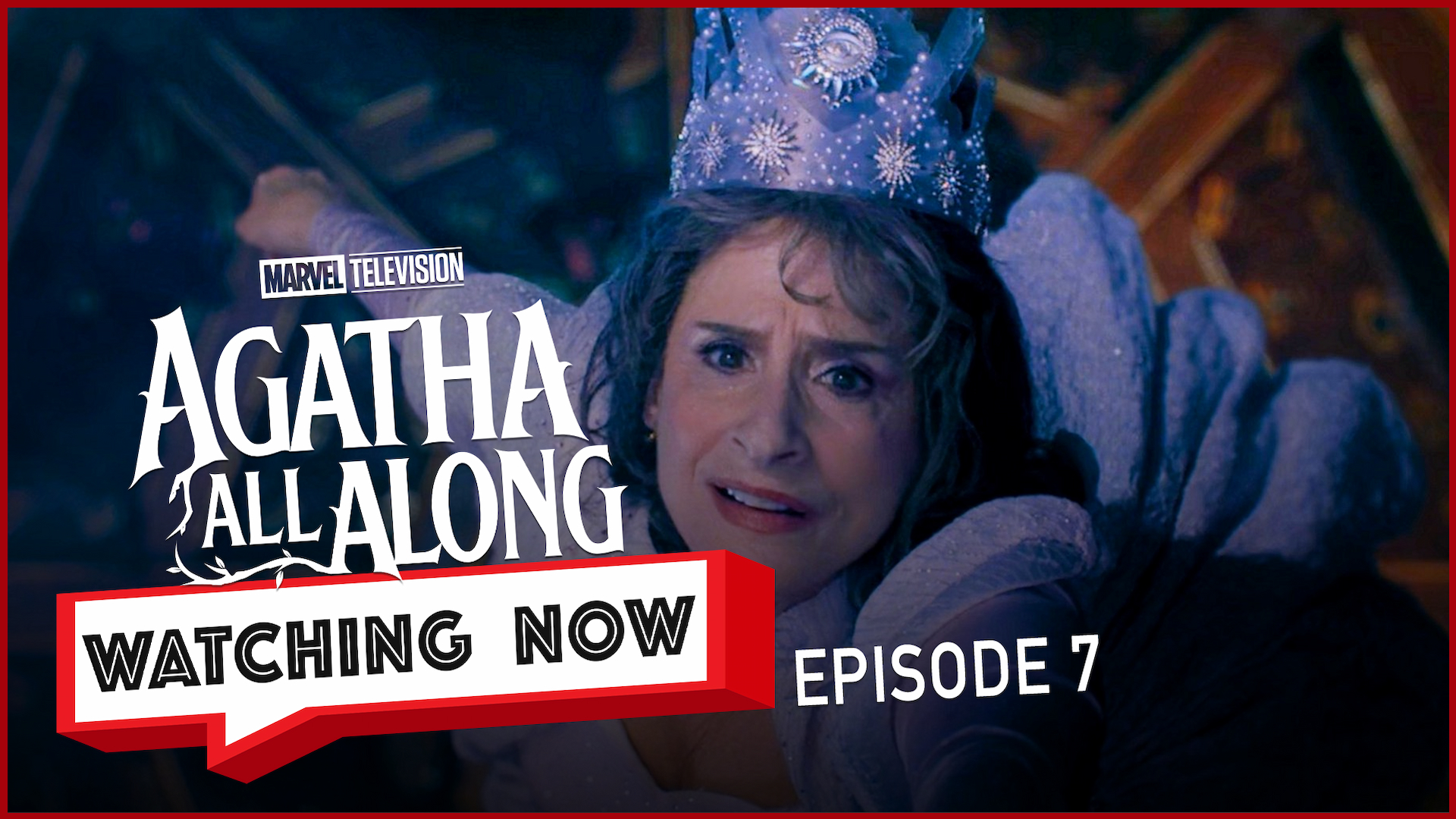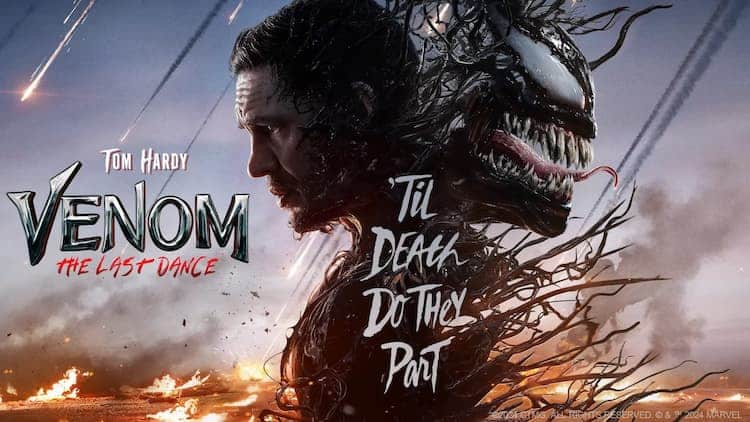
Sea of Stars is a retro-inspired turn-based RPG developed by Sabotage Studio. It was released on PC, PS4, PS5, Xbox One, Xbox Series S and X, and Nintendo Switch on August 29th. Not only that, it was the first game to be released simultaneously on Xbox Game Pass and PS Plus Game Catalogue. But you’ll be forgiven if, amongst massive, sprawling RPGs like Starfield, Baldur’s Gate 3 and Tears of the Kingdom, you’re yet to experience Sea of Stars. It’s a game that’s flown under the radar.
I’m telling you: don’t let it stay that way.
In a year jam-packed full of great games, Sea of Stars is my current Game of the Year, and it’s not even close.
In a world once terrorized by The Fleshmancer (cool name), the remaining occupants rely on Solstice Warriors to defeat the remnants of its creations, Dwellers. Valere and Zarl are two trainee warriors on a mission to defeat the Dweller of Woe and save the world. They are accompanied on their mission by their childhood friend and Warrior-Cook, Garl (who is the most likable character in any video game), along with a rogues gallery of other NPCs and playable characters.

In true RPG style, the story tilts this way and that and then throws you for a loop. Plot twists come out of nowhere, and even ones you’re expecting take interesting, unexpected turns. There are six playable characters, and each one has a dense, individual backstory and curious characteristics.
The story is a prequel to The Messenger, developed by the same studio. It’s not necessary to have played it to understand the story, but you’ll see common enemies, allies and locations, which I won’t spoil here. The Messenger serves as enhancement material, so you won’t be missing an essential aspect of the story without playing it.
But also, go and play The Messenger, too. It’s a kickass Metroidvania I would recommend to anyone.
Sea of Stars wears its influences on its sleeves: games like the JRPG classic Chrono Trigger. Its 2D pixel-art environments, character models, and animations are charming and beautiful. Charmingly beautiful, you could say. But the guys at Sabotage didn’t stop there. The world has dynamic lighting! The sun and moon (an important aspect of a game centered on Solstice Warriors) cast shadows and reflect light as per their positions in the sky, interacting with the environment, playable characters, NPCs and enemies alike!
And their cutscenes are amazing! Sabotage contracted Du Coup Animation for in-game cinematics, and the quality is awe-inspiring, enhancing the already-excellent graphics with an extra little bit of oomph. I know I’m gushing, but I dare you not to be open-mouthed when Teaks, the traveling historian, is introduced.

The excellent graphical style is accompanied by an excellent soundtrack composed by Eric W. Brown (also known as “Rainbowdragoneyes”) and the legendary Yasunori Mitsuda (composer for Chrono Trigger). Stylistically, it fits the world perfectly; fantastical melodies accompany your heroes throughout, turning edgier in darker areas. You can collect the music for an in-game band to play and remix! Most, if not all, of the tracks are bangers that will be ear-worming your head for days to come!
In terms of performance, there’s nothing to say: no bugs, no frame drops, no soft locks. I played it on PS5, and there was not one incident in my fifty hours of playtime. Cue the applause.
Sabotage Studio made an homage to 90s turn-based RPGs. You control a troupe of weird and wonderful heroes traversing many different environments, battling foes and extravagant bosses along the way. Three of the six playable characters can fight at once, and each has their own strengths in combat, like bludgeoning or sharp damage, or sun, moon or poison damage.

Your characters earn XP and level up after they gain enough, allowing you to choose to focus extra stat increases into specific attributes. Those attributes can also be enhanced by your gear and items like amulets. You can restore your HP and MP at any time, in or out of battle, using items (food). This, so far, is standard fare for a turn-based RPG, right?
So here’s the thing: I never mesh with turn-based RPGs. What I’ve written would not have enticed me to play this game. If I’m being honest, if I hadn’t loved The Messenger, I would have passed on Sea of Stars.
But Sea of Stars is a different kind of RPG. It fixes all of my issues with this type of game.
Your experience level is perfectly scaled throughout the game WITHOUT THE NEED TO GRIND. Valere, Zale and crew have enough HP and MP to finish any battle, even by mainlining the story. That’s because each battle is a puzzle and encourages active battling. There are a few ways it is achieved, ranging from attacking specific limbs of a boss to cripple it before attacking it outright, to disrupting an enemy’s spell cast by using the correct combination of damage before the turn meter expires. And by timing an extra button press, an incoming attack can be nerfed, or your own attack can be buffed. Active participation, as opposed to spamming the same attack over and over.

Random battles when exploring are not a thing. There is a visual representation of enemies on-screen before you reach an area in the majority of cases, allowing you to prepare. Yes, there is no “run away” feature, but there is a chance you can avoid the battle by avoiding the enemies on-screen. It’s extra attention to detail I enjoy, and it avoids the situations I had with trying to escape areas in Final Fantasy X-2 and couldn’t because of being trapped by pointless encounters.
For the completionist, there are also no missable trophies aside from one designed for new game plus! Everything can be collected post-game, which also opens an alternate or “true” ending. And, peeps, IT’S SO SATISFYING! Rarely has a 100% completion bonus been as well conceived. Everything is meaningful and enjoyable to play, so there’s nothing to discourage going the extra mile.
It has Relics, which act as game modifiers, adding extra approachability if you need it. For example, one relic heals your party after each battle. One increases damage output, and one decreases damage taken. It’s not something I used, but it’s great to have extra options to remove barriers to players.
I could go on and on about this game, but suffice it to say, this game hits different.

I’ve been waxing lyrical for this entire review. A game funded on Kickstarter has no freaking right to be this good. Sabotage Studio followed up an excellent Metroidvania with a turn-based RPG, showing an ambition to make something bigger, better, more polished, and a totally different genre! How?! Just how?! They totally nailed every part of this.
I want to give some balance by pointing out weaknesses. It’s difficult. I didn’t use the cooking feature, but that’s not because it’s a bad mechanic. I don’t like using items in combat. The lack of fast travel can be annoying in the early game, but it improves over time. I’m trying to find negatives, but I can’t!
The length is perfect for someone like me. The elimination of needless level grinding means the main story can be completed in just under 30 hours! The true ending takes another 7-8 hours to achieve, and, for completionists like me, a further 5 hours can net that sweet, sweet Platinum Trophy! JRPGs tend to intimidate me, having to invest 100s of hours to reach a conclusion, but not Sea of Stars. Its length is similar to that of a AAA game, punching in at approximately the same time as God of War: Ragnarok!
Sea of Stars is a well-made, beautiful and fun game that should be on everybody’s backlog if they’ve not played it already. In a year of fantastic games, this one stands tall.
So, if you’ve been sleeping on this game, WAKE THE F**K UP!
Soup Rating 10/10




